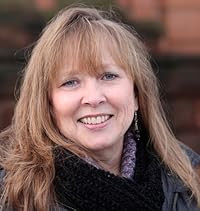
How long have you been a writer?
I’ve been writing off and on since childhood. The first story I can remember writing was called The Empty-Treed Forest. Looking back, this was an environmental piece somewhat strange for a seven-year-old to produce. As a teenager I wrote bad protest poetry, and then set creative writing aside for a long time in favor of the academic reports and theses necessary to acquire degrees. In the early 1990s I picked up the pen again to start writing articles and books in earnest.
Why do you write?
I have a passion for expression. That’s why I find it so important to, as much as possible, integrate some form of it into my everyday life and live through deeply held values. There were too many years I didn’t do that and felt cut off, which—of course—is how I came to do the work I do with others. In particular, writing and artwork are how I work things out internally and keep the creative juices flowing.
What types of writing do you do? The themes have to do with spiritual evolution, natural healing, indigenous cultures, and advocacy related to Native wisdom traditions in danger of decimation. I cover these subjects in journal and magazine articles, as well as narrative nonfiction and fiction books.
Aside from being a writer, you’re sometimes called a conscious living teacher. What is that? How do you teach it?
I was actually given that distinction by a talk show host several years ago. It seems to have stuck. To me, conscious living means really being aware of the effects of our thoughts and actions. One of the ways I teach it is to ask people to be aware of what ways they are bringing their past into the present, and then creating their future through that mindset. Beyond that, what are the ramifications not only for them as individuals, but also for those they touch in their lives and the environment.
Are you solely a writer or do you have multiple occupations?
I view my books and articles as vehicles for my lifework, a way folks can be introduced or as an adjunct to my programs. For more than twenty years I’ve been mentoring people toward conscious living, essentially to realign their lives. In 1999 I founded Kenosis LLC to support human potential through travel journeys working with Native spiritual leaders and healers in Peru, Mexico, Guatemala and the USA; and mentoring programs integrating Neuro-Linguistic Programming (NLP) and sacred world traditions. Then in 2007 I established Kenosis Spirit Keepers, its nonprofit extension, to help preserve indigenous lifeways through various projects. I’ve also been doing conflict mediation since the late ‘80s when most people didn’t know what it was. They thought I was talking about meditation! These days I specialize in family mediations for divorcing parents.
What’s the significance of the title of your book Standing Stark: The Willingness to Engage? How did you come up with it?
It’s a metaphor for the person who is deeply committed to a spiritual path. I spend a lot of time walking in the forest and my attention has always been drawn to ponderosa pines that have been struck by lightning. They stand taller than the rest of the trees and, at least to me, seem to offer themselves up for what will clear away extraneous underbrush. It takes a lot of courage to be able to withstand the heat, so to speak. Being a storyteller, I think in metaphor a lot and how something I observe or experience may relate to a point I want to illustrate. Readers are likely to see themselves in various ways in Standing Stark, the same as reported to me from readers of my other books Portals to the Vision Serpent (2013) and Calling Our Spirits Home: Gateways to Full Consciousness (2000).
Buy Now @ Amazon
Genre – Nonfiction, Spirituality
Rating – PG
More details about the author and the book

No comments:
Post a Comment